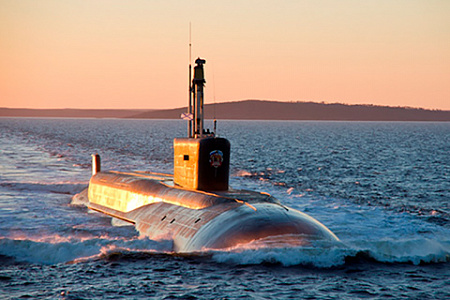The Krylov Scientific Center remains the leading institution for modeling and evaluating the capabilities of submarines
On the approaching Day of the Submariner, which is celebrated annually in our country on March 19, it is appropriate to recall another event that became fateful for the post-war development of the Russian Navy. Exactly 70 years ago, back in 1952, the creation of the first domestic nuclear submarine began in the Soviet Union.
The scale and complexity of the scientific, technical and technological tasks in the difficult post-war period required the involvement of the best forces of domestic science and industry, hundreds of research institutes, design bureaus and enterprises of various industries to solve them.
An important role was then assigned to the Central Research Institute named after Academician A.N. Krylov – the main institute of the Ministry of Shipbuilding Industry of the USSR (today - Krylov State Scientific Center), which dealt with scientific and technical support for the development of domestic shipbuilding, design and construction of ships and vessels, including submarines, which has accumulated significant scientific potential in this area.
Suffice it to say that the design of the first Russian combat submarine "Dolphin" took place back in 1900 under the general supervision of the deputy head of the Experimental Pool (from which the history of the Central Research Institute named after Academician A.N. Krylov - Krylov State Scientific Center) Ivan Grigoryevich Bubnov (the head of the pool was then Alexey Nikolaevich Krylov).
It is quite natural that it was within the walls of the Central Research Institute named after Academician A.N. Krylov in 1952 that the development of the first domestic nuclear submarine (project 627 cipher "Kit") began. The scientific director of the shipbuilding part of the project was appointed the director of this Central Research Institute, engineer-Rear Admiral Viktor Ivanovich Pershin, and the chief designer, while retaining the position of deputy director for Science, was engineer-captain 1st rank Vladimir Nikolaevich Peregudov.
Back in 1947, Vladimir Nikolaevich, already a mature and experienced marine engineer, was transferred to the Central Research Institute named after Academician A.N. Krylov, initially to the position of head of the department for new promising areas of shipbuilding, and since 1951 - deputy director for scientific work. This time at the Institute was marked by the conduct of large-scale research work to improve the combat effectiveness of ships, accompanied by the active development of the experimental base, including the construction of unique experimental pools. Here, under the guidance of the future chief designer of the submarine pr. 627, a number of scientific studies were carried out on the controllability of a submarine in an underwater position and the strength of its structural elements, a reference book of a submarine designer was prepared and published.
In February 1953, Vladimir Nikolaevich was appointed chief and chief designer of SKB-143 (now SPMBM "Malachite"), who was entrusted with the design of the first submarine. He managed to bring together the efforts of hundreds of organizations, among them the Central Research Institute named after Academician A.N. Krylov, to solve this most difficult task. Among the many questions that arose, for example, special attention was required to the issues of the controllability of the boat at high, previously unattainable, underwater speeds. When manually controlling the movement of the submarine, there was a danger of creating emergency situations due to the human factor. To eliminate it, an urgent development of automatic ship motion control systems was required, and for this, in turn, an accurate knowledge of its hydrodynamic characteristics with new forms of contours.
The established effective tandem in the person of the Central Research Institute named after Academician A.N. Krylov (V.I. Pershin) and SKB-143 (V.N. Peregudov) made it possible to successfully and in the shortest possible time solve a number of complex scientific and technical problems. The subjects of theoretical and experimental research were various variants of the submarine hull, the influence of propellers of various shapes on the seaworthiness, controllability and acoustic stealth of the ship. The maneuverability of the boat, its side and keel pitching in the underwater position, the process of diving and surfacing with and without stroke were studied. To carry out these works, unique experimental installations and equipment were manufactured, including special devices for underwater testing of models in swimming pools. The results obtained made it possible to obtain data on the coefficients of water resistance to the movement of the ship, its controllability in surface and underwater positions, to determine the geometric dimensions of the bow tip, the propeller-steering complex and the guardhouse of the submarine.
As the scientific supervisor of the shipbuilding part of project 627, Viktor Ivanovich Pershin, director of the Central Research Institute named after Academician A.N. Krylov, was at the origins of the first design studies of this ship carried out in the strictest secrecy. They were conducted under the leadership of his deputy V.N. Peregudov in Moscow, on the territory of the Kurchatov Institute, where V.I. Pershin periodically traveled with a small group of his specialists, providing solutions to key design issues (choice of hull materials, immersion depth, power plant capacity, etc.).
In order to ensure the development of the project 627 submarine, the divisions of the Krylov Central Research Institute performed in 1952-1955, under the leadership of Viktor Ivanovich Pershin, a large complex of works in the field of seaworthiness, controllability, strength, acoustic protection, etc., introducing into the project a number of new technical solutions for the contours of the hull, structure, low-noise propeller, acoustic protection means. Since then, new knowledge and proven methods of conducting research in an ever-growing volume have become the most important areas of activity of the current Krylov Scientific Center for many years.
Sergey Titushkin
Sergey Ivanovich Titushkin - Head of the history group of the Krylov State Scientific Center, captain of the 1st rank of the reserve

